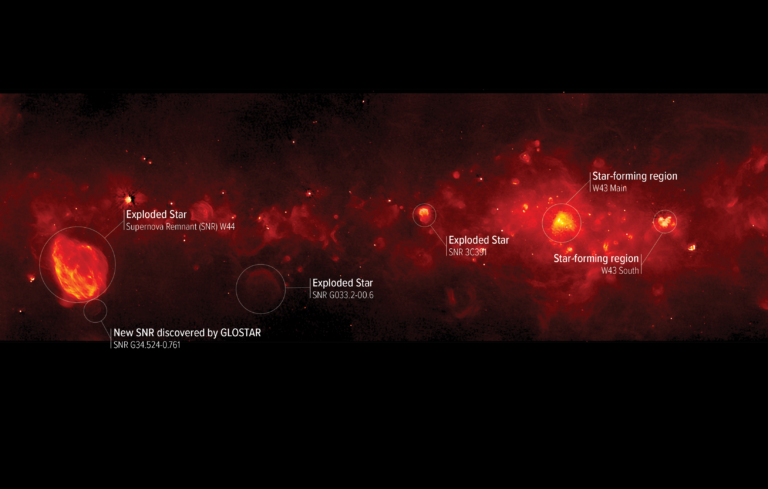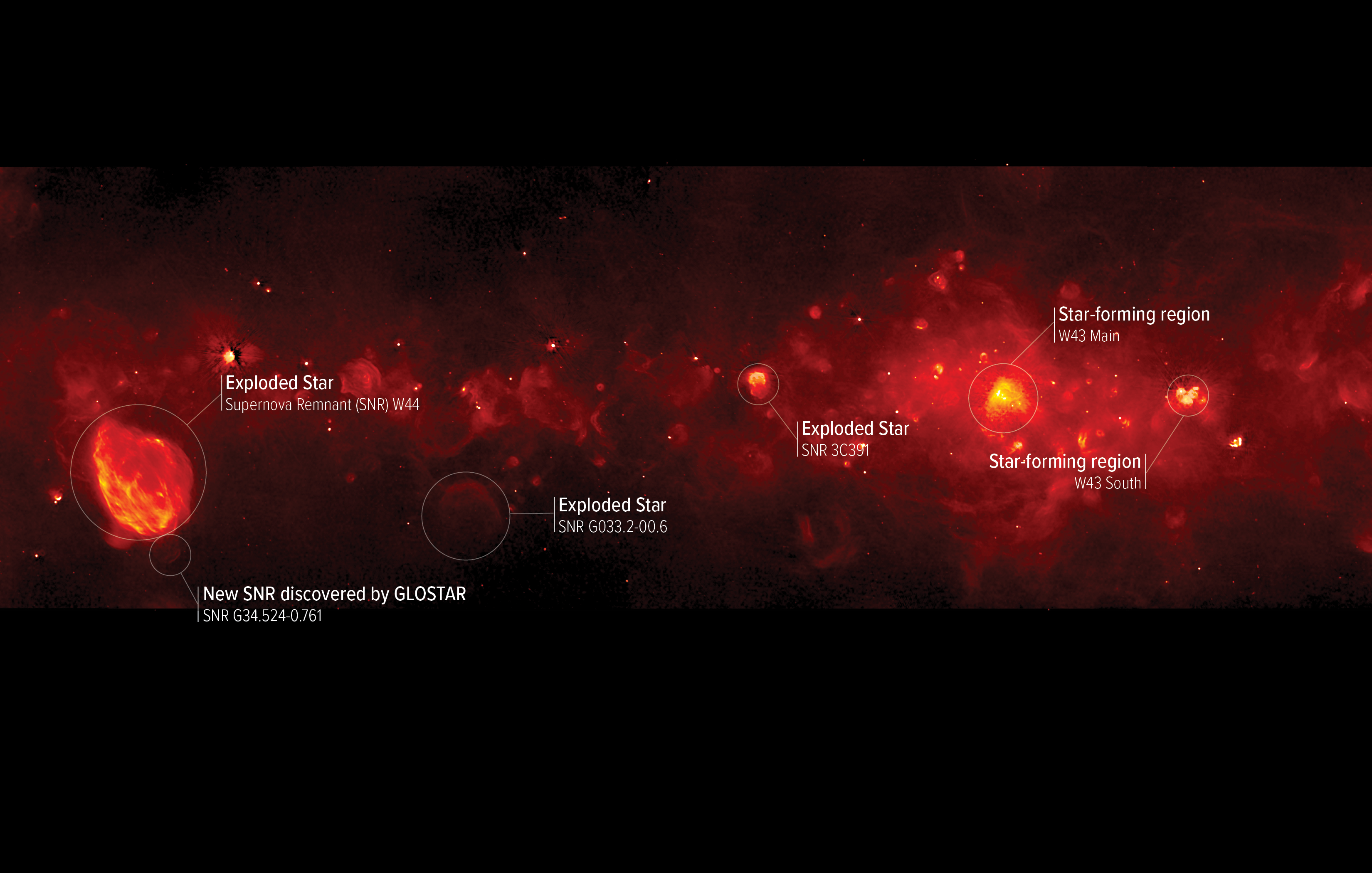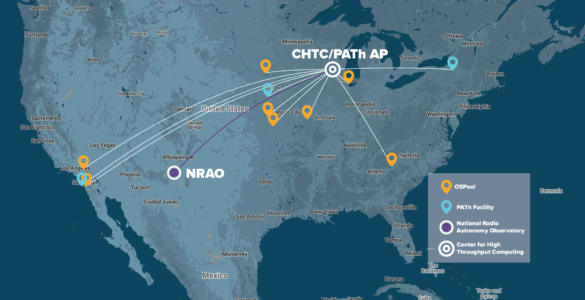Astronomers using two of the world’s most powerful radio telescopes have made a detailed and sensitive survey of a large segment of our home galaxy — the Milky Way — detecting previously unseen tracers of massive star formation, a process that dominates galactic ecosystems. The scientists combined the capabilities of the National Science Foundation’s Karl G. Jansky Very Large Array (VLA) and the 100-meter Effelsberg Telescope in Germany to produce high-quality data that will serve researchers for years to come.
Stars with more than about ten times the mass of our Sun are important components of the Galaxy and strongly affect their surroundings. However, understanding how these massive stars are formed has proved challenging for astronomers. In recent years, this problem has been tackled by studying the Milky Way at a variety of wavelengths, including radio and infrared. This new survey, called GLOSTAR (Global view of the Star formation in the Milky Way), was designed to take advantage of the vastly improved capabilities that an upgrade project completed in 2012 gave the VLA to produce previously unobtainable data.
GLOSTAR has excited astronomers with new data on the birth and death processes of massive stars, as well on the tenuous material between the stars. The GLOSTAR team of researchers has published a series of papers in the journal Astronomy & Astrophysics reporting initial results of their work, including detailed studies of several individual objects. Observations continue and more results will be published later.
The survey detected telltale tracers of the early stages of massive star formation, including compact regions of hydrogen gas ionized by the powerful radiation from young stars, and radio emission from methanol (wood alcohol) molecules that can pinpoint the location of very young stars still deeply shrouded by the clouds of gas and dust in which they are forming.
The survey also found many new remnants of supernova explosions — the dramatic deaths of massive stars. Previous studies had found fewer than a third of the expected number of supernova remnants in the Milky Way. In the region it studied, GLOSTAR more than doubled the number found using the VLA data alone, with more expected to appear in the Effelsberg data.
“This is an important step to solve this longstanding mystery of the missing supernova remnants,” said Rohit Dokara, a Ph.D student at the Max Planck Institute for Radioastronomy (MPIfR) and lead author on a paper about the remnants.
The GLOSTAR team combined data from the VLA and the Effelsberg telescope to obtain a complete view of the region they studied. The multi-antenna VLA — an interferometer — combines the signals from widely-separated antennas to make images with very high resolution that show small details. However, such a system often cannot also detect large-scale structures. The 100-meter-diameter Effelsberg telescope provided the data on structures larger than those the VLA could detect, making the image complete.
“This clearly demonstrates that the Effelberg telescope is still very crucial, even after 50 years of operation,” said Andreas Brunthaler of MPIfR, project leader and first author of the survey’s overview paper.
Visible light is strongly absorbed by dust, which radio waves can readily penetrate. Radio telescopes are essential to revealing the dust-shrouded regions in which young stars form.
The results from GLOSTAR, combined with other radio and infrared surveys, “offers astronomers a nearly complete census of massive star-forming clusters at various stages of formation, and this will have lasting value for future studies,” said team member William Cotton, of the National Radio Astronomy Observatory (NRAO), who is an expert in combining interferometer and single-telescope data.
“GLOSTAR is the first map of the Galactic Plane at radio wavelengths that detects many of the important star formation tracers at high spatial resolution. The detection of atomic and molecular spectral lines is critical to determine the location of star formation and to better understand the structure of the Galaxy,” said Dana Balser, also of NRAO.
The initiator of GLOSTAR, the MPIfR’s Karl Menten, added, “It’s great to see the beautiful science resulting from two of our favorite radio telescopes joining forces.”
The National Radio Astronomy Observatory is a facility of the National Science Foundation, operated under cooperative agreement by Associated Universities, Inc.
###
Media Contact:
Dave Finley, Public Information Officer
(505) 241-9210
dfinley@nrao.edu



















